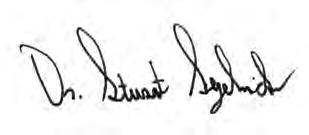
6 minute read
Editorial
Good Faith Estimates and the No Surprises Act
Federal law requires dentists to be up front with self-pay patients about the cost of their treatment. Surprises may lead to penalties.
The No Surprises Act (NSA) went into effect on Jan. 1, 2022. This is a federal law that applies to all health-care providers, including dentists. The law gives certain rights to patients to help protect them from receiving surprise medical bills. These surprises usually occur when a person has no control over who treats them, such as during an emergency or when they are treated unknowingly by an out-of-network provider.[1]
Within the NSA there are provisions for health-care providers to furnish patients with a good faith estimate (GFE). Any dental patient who doesn’t have dental insurance or doesn’t want to file a claim must be provided with a GFE before treatment can be rendered. NYSDA Legal Counsel Lance Plunkett explained in a memo to members: “If you bill an insurer at all, then the good faith estimate does not apply. It doesn’t matter if the insurer refuses to pay or if the patient pays first. If you send a claim to the insurer, then the good faith estimate does not apply.”
There are times when a patient doesn’t want to wait for the preauthorization to come back and they pay in advance. These patients are not self-pay, because they have insurance, in what is described as only a case of delayed insurance billing.
Mr. Plunkett also said it doesn’t matter if you’re a participating provider with the plan or not. So long as the patient has dental insurance and you are billing it out for them, there is no need to provide a GFE (Medicaid being the exception). Mr. Plunkett stressed, “However, if there is no coverage at all for a service, the patient selfpays, no claim is filed with the insurer, and the dentist is not bound by any non-covered service discounts and charges—then that is a self-pay scenario requiring a good faith estimate.”
There are also dental plans that necessitate non-covered services (which are not insured services) to be paid at a discounted rate (that is, discount plans), and since those discounts are part of the patient’s insurance plan, dentists are not required to provide a good faith estimate. Though vetoed twice by the governor, NYSDA is again seeking legislation to terminate discounted rate plans in New York State, which would then require GFEs.
And there is a scheduled time frame within which the GFE must be provided, as well as requirements for structuring the GFE.[2,3,4] I have outlined these below as they should be presented to your patients. Note that the deadline for providing a GFE is triggered either when the patient asks for an estimate or schedules an appointment.
What Your Patients Need to Know
Time frame for a Good Faith Estimate
“You should get a good faith estimate if you schedule an appointment at least 3 business days in advance. You can ask your provider directly for an estimate if they don’t give one to you.
• When you schedule care 0-2 business days in advance, you aren’t entitled to get a good faith estimate.
• When you schedule care 3-9 business days in advance, you’ll get the estimate within 1 business day.
• When you schedule care 10 or more business days in advance, you’ll get the estimate within 3 business days. You can ask your provider for an estimate before you schedule care. They must give it to you within 3 business days.”[3]
The GFE should include the name and birthdate of the patient, when the primary service is to be performed, the dental codes/medical codes for the work being done, the practice/provider’s name, tax ID, NPI, the address where treatment will be rendered and a list of possible treatments that will be needed afterward.[5,6] These must be given “in a way that’s accessible to you (the patient), like in large print, Braille, audio files, or other forms of communication. Providers and facilities must also explain the good faith estimate to you over the phone or in person if you ask, then follow up with a written (paper or electronic) estimate, per your preferred form of communication.”[7]
Good Faith Estimate Inclusions
• “A description of the service you will be getting;
• A list of other services that are reasonably expected to be provided with the service you are getting;
• The diagnosis and expected service codes;
• The expected charges for the services;”[2]
Charts can also be utilized in preparing the GFE,[5] and there are some very good examples online.[8,9] I am happy to share with you the forms I use in my office when providing patients with a good faith estimate. Email me at eperio@aol.com and I will send them to you.
Putting the Law into Practice
According to my office manager, our earliest and perhaps biggest challenge was generating a GFE that fits our practice and reflects our services and costs in a way that is accurate without being overwhelming to patients, while meeting the GFE compliance standards.
For us, this meant creating different versions of the GFE: one for new patients outlining consultation costs; one for surgical patients; and one for recall hygiene patients. Our office then prepares and sends out the GFEs immediately following the scheduling of the appointment via email. We find this to be the best practice to ensure compliance.
Some patients may not have access to email or may struggle to open encrypted files. Patients can insist on a written estimate instead of ones sent electronically. In these instances, postal mail will be sent. Patient information, including the patient’s full mailing address, will need to be collected. Some new patients may be hesitant to provide this information prior to their first office visit.
We also took time to prepare versions of the GFE in Spanish and Russian, including disclaimers. Other practices may need to do the same, depending on their patient demographic, to ensure accessibility of the GFE.
A good time to provide the GFE is when the patient is in the office scheduling their next appointment. Remember, same-day emergency care, or scheduling appointments within two days, does not initiate the GFE process and, therefore, a GFE does not need to be given.
The No Surprises Act stipulates that the patient has a right to dispute their bill only if the GFE differs by $400 dollars or more from what was charged. This is separate from their right to receive the GFE. Penalties range from having to impose a corrective action plan to a $10,000 fine per violation. According to Mr. Plunkett, the Office of Professional Discipline (OPD) might take action against a dentist’s license for willful violation of the law; therefore, it is always best to comply with the law and avoid the possible surprising penalties of noncompliance.

REFERENCES
1. https://www.mayoclinic.org/billing-insurance/no-surprises-act#:~:text=Under%20the%20 law%2C%20healthcare%20providers,items%20or%20services%20are%20provided (Accessed 8/11/2024)
2.https://www.dfs.ny.gov/consumers/health_insurance/protections_federal_no_surprises_act (Accessed 8/11/2024)
3. https://www.cms.gov/medical-bill-rights/help/guides/good-faith-estimate (Accessed 8/11/2024)
4. https://www.ecfr.gov/current/title-45/subtitle-A/subchapter-B/part-149#p-149.610(c)
5. https://www.cms.gov/CCIIO/Resources/Regulations-and-Guidance/Downloads/GuidanceGood-Faith-Estimate-Patient-Provider-Dispute-Resolution-Process-for-Providers-FacilitiesCMS-9908-IFC.pdf
6. https://www.cms.gov/files/document/gfe-and-ppdr-requirements-slides.pdf
7. h ttps://www.cms.gov/files/document/nosurpriseactfactsheet-whats-good-faith-estimate508c.pdf
8. https://www.cms.gov/files/document/good-faith-estimate-example.pdf
9.https://view.officeapps.live.com/op/view.aspxsrc=https%3A%2F%2Fwww.michigandental. org %2Fwp-content%2Fuploads%2F2022%2F02%2FSample-Good-Faith-Estimate-for-Health-Care-Items-and-Services-Form.doc&wdOrigin=BROWSELINK










